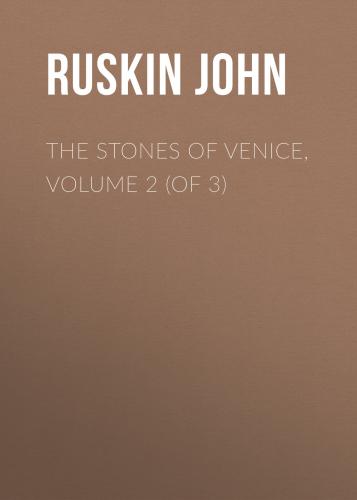12
“On the 14th day of April, 1374, there were found, in this church of the first martyr St. Stefano, two hundred and more bodies of holy martyrs, by the venerable priest, Matthew Fradello, incumbent of the church.”
13
Notizie Storiche, p. 620.
14
The intention is farther confirmed by the singular variation in the breadth of the small fillet which encompasses the inner marble. It is much narrower at the bottom than at the sides, so as to recover the original breadth in the lower border.
15
Its elevation is given to scale in fig. 4, Plate XIII., below.
16
“Luogo de’ ninfe e de’ semidei.”—
17
“The women, even as far back as 1100, wore dresses of blue, with mantles on the shoulder, which clothed them before and behind.”—
It would be difficult to imagine a dress more modest and beautiful. See Appendix 7.
18
Vide Appendix 8.
19
Acts, xiii. 13; xv. 38, 39.
20
The reader who desires to investigate it may consult Galliciolli, “Delle Memorie Venete” (Venice, 1795), tom. ii. p. 332, and the authorities quoted by him.
21
Venice, 1761, tom. i. p. 126.
22
St. Mark’s Place, “partly covered by turf, and planted with a few trees; and on account of its pleasant aspect called Brollo or Broglio, that is to say, Garden.” The canal passed through it, over which is built the bridge of the Malpassi, Galliciolli, lib. i. cap. viii.
23
My authorities for this statement are given below, in the chapter on the Ducal Palace.
24
In the Chronicles, “Sancti Marci Ducalis Cappella.”
25
“To God the Lord, the glorious Virgin Annunciate, and the Protector St. Mark.”—
is no longer to be seen, and is conjectured by Corner, with much probability, to have perished “in qualche ristauro.”
26
Signed Bartolomeus Bozza, 1634, 1647, 1656, &c.
27
Guida di Venezia, p. 6.
28
The mere warmth of St. Mark’s in winter, which is much greater than that of the other two churches above named, must, however, be taken into consideration, as one of the most efficient causes of its being then more frequented.
29
I said above that the larger number of the devotees entered by the “Arabian” porch; the porch, that is to say, on the north side of the church, remarkable for its rich Arabian archivolt, and through which access is gained immediately to the northern transept. The reason is, that in that transept is the chapel of the Madonna, which has a greater attraction for the Venetians than all the rest of the church besides. The old builders kept their images of the Virgin subordinate to those of Christ; but modern Romanism has retrograded from theirs, and the most glittering portions of the whole church are the two recesses behind this lateral altar, covered with silver hearts dedicated to the Virgin.
30
Vide “Builder,” for October, 1851.
31
“Quivi presso si vedi una colonna di tanta bellezza e finezza che e riputato
32
The fact is, that no two tesseræ of the glass are exactly of the same tint, the greens being all varied with blues, the blues of different depths, the reds of different clearness, so that the effect of each mass of color is full of variety, like the stippled color of a fruit piece.
